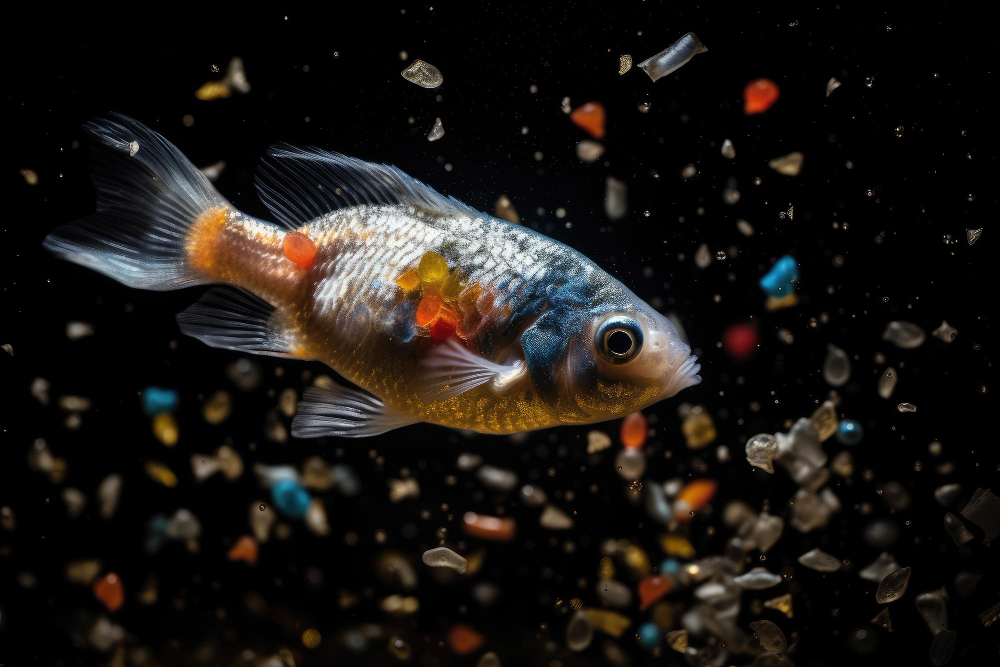
JUL 23, 2024
In recent years, the pervasive presence of plastic in our environment has raised significant concerns, particularly regarding its breakdown into smaller particles known as microplastics. These tiny plastic particles, often invisible to the naked eye, are emerging as a major environmental and health concern worldwide.
What are Microplastics?
Microplastics are plastic particles smaller than 5 millimeters in size, either manufactured at this scale or formed through the breakdown of larger plastic items like bottles and bags. They can be categorized further into primary microplastics (originally manufactured at a small size) and secondary microplastics (resulting from the breakdown of larger plastics).
Sources and Spread
Microplastics enter the environment through various routes:
- Primary Microplastics: These are intentionally manufactured for use in products such as cosmetics, personal care products, clothing (e.g., synthetic fabrics), and industrial abrasives.
- Secondary Microplastics: These are formed when larger plastic debris degrade due to weathering, breaking into smaller pieces over time. They can be found in oceans, rivers, soil, air, and even in food and beverages.
Where We Can Find Microplastics:
- Water Sources: Microplastics have been detected in freshwater sources such as rivers and lakes, as well as in marine environments. They are often found in high concentrations near urban areas and coastal regions due to runoff and improper waste disposal.
- Food and Beverages: Microplastics have been found in various food items including seafood (especially shellfish and fish), salt, honey, and even in drinking water. Seafood consumption is a significant route of exposure to microplastics for humans.
- Air: Recent studies have also detected microplastics in the air we breathe, particularly in urban environments and indoor settings where synthetic materials are prevalent.
Health Implications
The health implications of microplastics are a growing area of concern among researchers and health professionals. Several potential risks have been identified:
- Ingestion: Microplastics can enter the human body through ingestion of contaminated food and water. They can accumulate in the gastrointestinal tract and potentially translocate to other organs.
- Absorption of Chemicals: Microplastics have a unique ability to adsorb and concentrate harmful chemicals such as persistent organic pollutants (POPs) and heavy metals from the environment. These chemicals can then be released inside the body upon ingestion, posing toxicity risks.
- Endocrine Disruption: There is emerging evidence suggesting that microplastics may act as endocrine disruptors, interfering with hormone systems and potentially leading to developmental, reproductive, neurological, and immune-related disorders.
- Inflammation and Tissue Damage: Studies suggest that microplastics may induce inflammatory responses and physical damage to tissues upon ingestion, potentially disrupting normal bodily functions.
- Bioaccumulation: Microplastics can bioaccumulate in organisms over time, leading to higher concentrations in organisms higher up the food chain, posing risks to both human health and ecosystems.
- Long-Term Effects: The long-term health effects of chronic exposure to microplastics are not yet fully understood, but there are concerns about potential links to chronic diseases such as cancer, reproductive disorders, and immune system dysfunction.
Addressing the Issue
To mitigate the risks associated with microplastics, concerted efforts are needed:
- Regulation and Policy: Governments should strengthen regulations on plastic production, use, and disposal to reduce plastic pollution.
- Research and Monitoring: Continued research and monitoring programs are essential to better understand the environmental pathways and health impacts of microplastics.
- Consumer Awareness: Educating the public about microplastics and their sources can empower individuals to make informed choices and support initiatives aimed at reducing plastic waste.
- Innovation and Alternatives: Encouraging innovation in materials science and promoting the development of biodegradable alternatives to conventional plastics can help mitigate environmental and health impacts.
In conclusion, while the full extent of the health implications of microplastics is still being investigated, evidence suggests a significant and growing concern. Addressing this issue requires collaborative efforts from policymakers, researchers, industry, and individuals to minimize plastic pollution and safeguard human health and the environment for future generations.
Sources:
- National Oceanic and Atmospheric Administration (NOAA) – Microplastics in the Ocean.
- European Food Safety Authority (EFSA) – Presence of Microplastics in Food.
- United States Geological Survey (USGS) – Detection of Microplastics in Freshwater Sources.
- World Health Organization (WHO) – Health Risks of Microplastics in Drinking Water.
- Environmental Protection Agency (EPA) – Research on Microplastics in Air and Soil.
Leave a Reply